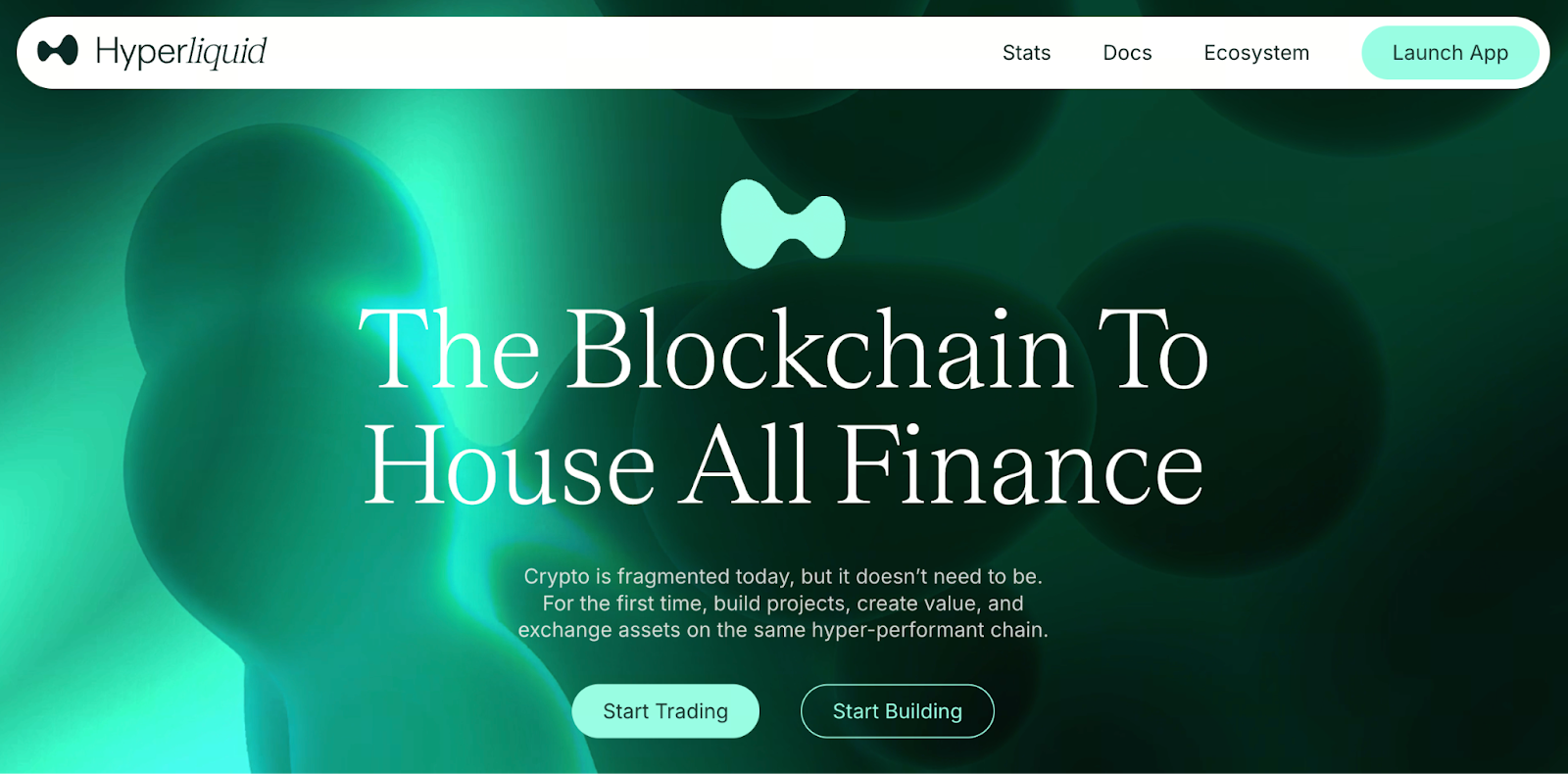Hyperliquid: Rise and Challenges of a Next-Gen Perpetual Contracts Platform
Hyperliquid Platform Overview

(Source: hyperfoundation)
Hyperliquid was founded by Jeff Yan, a former Hudson River Trading trader, and the pseudonymous developer iliensinc. Based in Singapore, the core team numbers around 15 members. The platform focuses on perpetual contracts (Perps), allowing users to trade freely on-chain with no KYC required. Its anonymous and highly efficient framework has quickly positioned Hyperliquid as a formidable competitor. It is now competing with established players like dYdX and GMX.
HLP Mechanism: Addressing Liquidity Challenges
One of Hyperliquid’s main innovations is the Hyperliquidity Provider (HLP) mechanism. HLP is an automated liquidity pool; once users deposit funds, the system continually generates buy and sell quotes, ensuring a consistent counterparty for every trade.
Currently, HLP’s pool exceeds $500 million in assets, making it the engine behind Hyperliquid’s rapid growth. This design helps resolve the classic challenge between attracting users and market makers, resulting in smoother market operations. However, the HLP mechanism has sparked debate: acting as both a market participant and liquidity provider may create a potential conflict of interest, leading to questions about the fairness of trading.
Decentralization vs. Power Concentration
Hyperliquid touts transparent, verifiable trading, but actual governance is highly centralized. Data shows there are currently only about 24 validators, with nearly two-thirds of HYPE staking weight controlled by Hyper Foundation, giving it significant influence over platform decisions. When a single token trade threatens system stability, validators may choose to revert transactions to prevent vault liquidation. This reality highlights that Hyperliquid still retains centralized characteristics.
HYPE Token Buyback
The platform dedicates most transaction fees to buying back HYPE tokens, fueling a cycle where capital markets and liquidity reinforce each other. The Assistance Fund has surpassed $1.4 billion.
Supporters see this as a driver of growth, but critics warn that declining trading volume could undermine the buyback mechanism. Paradigm has announced an $888 million fund to invest in HYPE, enabling traditional investors to participate indirectly in the Hyperliquid ecosystem.
HIP-3 Upgrade: User-Driven Market Creation
The recent HIP-3 proposal lets developers create perpetual contract markets on HyperCore without platform approval. Each market requires a stake of 500,000 HYPE tokens as collateral. This collateral is subject to partial or total forfeiture for protocol violations. This feature makes Hyperliquid more user-driven, blending Coinbase’s exchange capabilities with Ethereum’s Layer 1 (L1) attributes to deliver unprecedented flexibility.
Regulatory Uncertainty
Hyperliquid’s borderless and lack of audit requirements have drawn regulatory scrutiny. Although U.S. regulators are gradually relaxing restrictions, Hyperliquid’s sensitive positioning leaves its long-term outlook uncertain.
To learn more about Web3, click to register: https://www.gate.com/
Summary
Hyperliquid leverages a small, agile team and innovative mechanisms to rapidly capture the perpetual contract market. Whether through HLP liquidity, the token buyback system, or user-driven market creation, the platform demonstrates its intention to challenge traditional exchanges. Still, questions around true decentralization and regulatory risk remain front and center. Hyperliquid’s evolution is not just a reflection of crypto trading innovation. It is a proving ground for new industry rules and governance models.
Related Articles

Pi Coin Transaction Guide: How to Transfer to Gate.io

Flare Crypto Explained: What Is Flare Network and Why It Matters in 2025

How to Use a Crypto Whale Tracker: Top Tool Recommendation for 2025 to Follow Whale Moves

What is N2: An AI-Driven Layer 2 Solution

Understand Baby doge coin in one article
